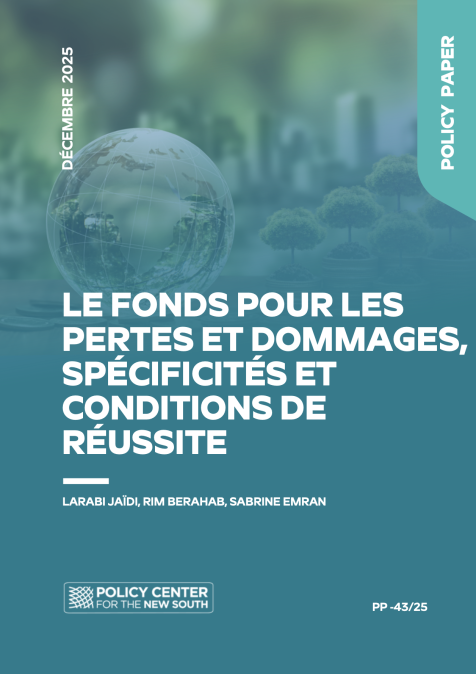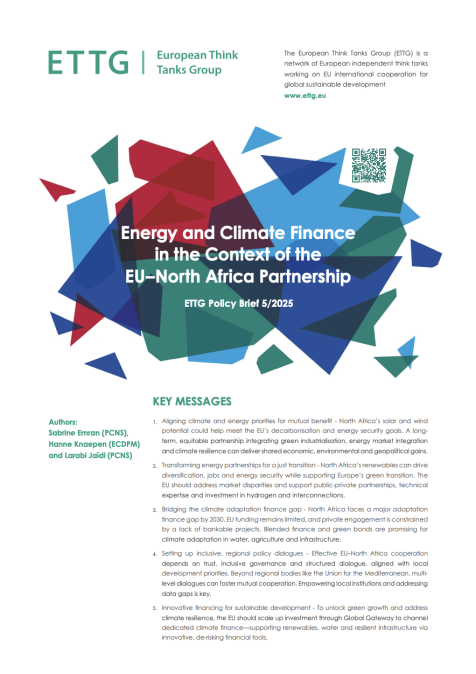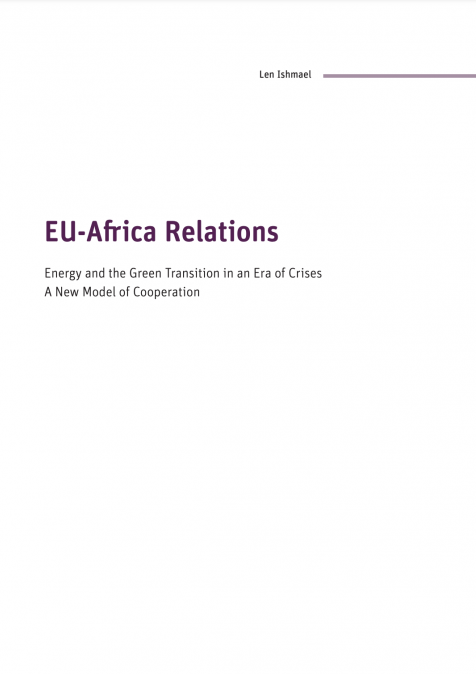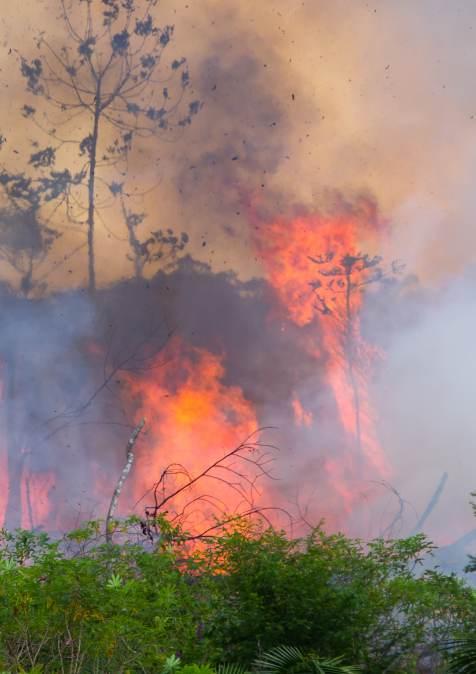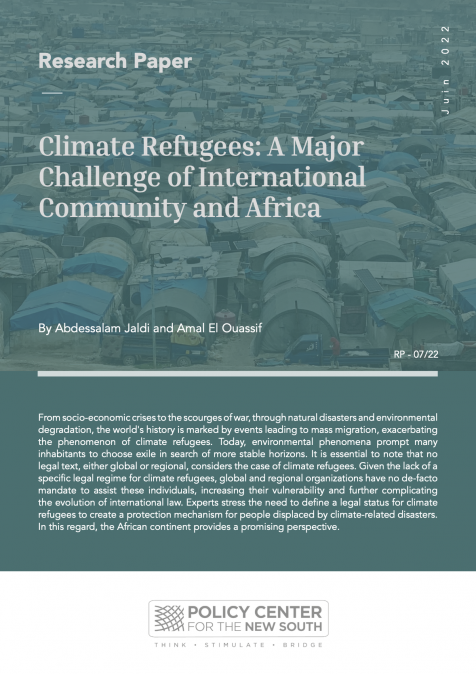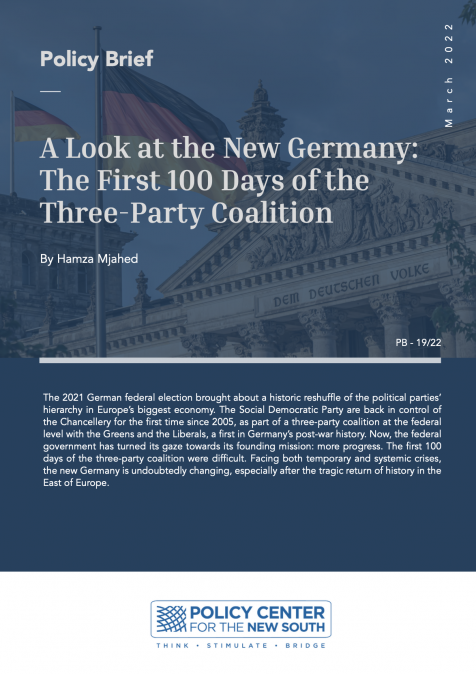Publications /
Opinion
The workshop “Coping with Climate Change” gathered experts, policy-makers and researchers to discuss recent econometric work on decoupling greenhouse gas emissions and economic growth. It explored different policies and instruments that countries and financial institutions are adopting to cope with the effects of climate change (adaptation) and to contribute to the global effort to combat climate change (mitigation).
Session 1: Decoupling of Emissions and Economic Activity
The first roundtable started with a presentation by Prakash Loungani of a framework to track decoupling of emissions and GDP. At first glance, there seems to be a simple relationship between the two variables: A positive correlation between emissions growth and output growth. Absolute decoupling appears to be occurring for a number of advanced economies that managed to transition to a low-carbon path. However, when looking at consumption-based emissions (that include emissions embodied in trade), we get a different picture: decoupling is no longer a reality for advanced economies such as Italy and the United Kingdom once imports of emissions-intensive goods are factored in. Countries implementing renewable energy and climate change mitigation seem to experience greater decoupling. A key question raised by participants was whether climate change agreements should focus on consumption-based rather than production-based emissions.
The following presentation by Renée Fry-McKibbin illustrated the findings of a study that examined whether energy use is decoupling from economic growth. While consumption-based models weaken the case that advanced economies decoupled, they do not overturn it. It also finds evidence that a shift of pollution to developing countries is occurring. Another interesting result is that China has lower responsiveness of emissions to trend growth than other emerging economies.
Stefan Dercon presented his book “Dull disasters? How planning ahead will make a difference”. Providing examples of the Ebola outbreak in West Africa, the latest earthquake in Nepal, and the ongoing drought in Ethiopia, he made the case for proactive risk management at all levels of society, along with ex-ante and ex-post instruments for financial planning to save lives and reduce the cost of the damage caused by natural disasters. His presentation highlighted the fact that a third of humanitarian aid is linked to natural disasters. Planning ahead and adequate preparedness is paramount to address the gap of efficiency during recovery efforts (e.g. slow, fragmented, and unreliable response) and the delays in allocation of humanitarian aid. Finally, Stefan Dercon outlined the three key ingredients needed for an insurance-like financing system that will “dull the disasters around us”:
(1) A fast, evidence-based decision-making process;
(2) a coordinated, credible plan for post-disaster action agreed in advance; and
(3) credible financing arrangements to ensure that the plan can be implemented.
Session 2: Helping Countries Cope with Climate Shocks
This roundtable explored how countries, particularly low-income countries, can shield their growth and fiscal positions from climate shocks. Giovanni Melina (IMF) examined the links between climate change, weather-related natural disasters, and macroeconomic outcomes. He explained how temperatures affect GDP through several transmission channels: agricultural output, labor productivity, trade, health, mortality rates, crime and conflicts. His presentation focused on small developing states, as these are much more prone to natural disasters affecting a large share of their GDP, while they cannot rely on big fiscal entities. Moreover, small developing states contributed little to climate change, but continue to suffer from its consequences. Presenting a model calibrated to features of low-income countries, the research concludes that natural disasters alone explain a permanent per-capita GDP loss of approximately 3.5% in small developing states, relative to non-small states.
Christopher Adam and David Bevan (University of Oxford) discussed how governments in small open economies may finance the reconstruction of public capital in the aftermath of a natural disaster, while keeping a balance between “ex ante” and ex post” mechanisms. Simulating a model for disaster risk, this presentation discussed the challenges and policy implications of three distinct financing packages: domestic financing, external debt, and insurance. They concluded that external debt financing is attractive when country’s risk premium is low, but becomes unattractive when the supply curve is sharply rising. Moreover, in the absence of heavy subsidy, insurance is too expensive to play a major role. In a presentation discussing previous studies, Willi Semmler agreed that disasters occur with higher frequency, although he considers that more work is needed to recognize their impact on severity/magnitude. While the rise of frequency and severity is relevant for specific disaster types (wildfire, flood, storm), concerns remain about data quality and vulnerability.
Session 3: Climate Change: The IMF and World Bank in Action
Johannes Wiegand presented the different areas where the IMF is providing practical guidance to countries in order to help them assess their financing needs to build resilience to climate change, in addition to supporting the design appropriate policy responses to mitigate climate change. While the IMF is not an environmental organization, it recognizes that climate change poses significant risks for macroeconomic performance, and it has developed multiple modes of engagement to tackle this issue, which are:
(1) Multilateral Surveillance and General Analytical Work (e.g. the World Economic Outlook, which found that macroeconomic impact of climate change will hit poor countries earlier and harder);
(2) Bilateral Surveillance (e.g. the Financial Sector Assessment Program, a joint product of the IMF and the World Bank, that provides a comprehensive, in-depth assessment of financial sector strengths and weaknesses);
(3) Capacity development and technical assistance (in areas such as energy subsidy and energy price reform, macro-economic management in resource-rich countries, carbon taxation, public financial management, stress testing); and
(4) Program engagement (e.g. emergency post-disaster financing).
Dirk Heine (World Bank) made the case for using fiscal policy to steer the economy towards sustainable development. He claims that the world has a finite global carbon budget to keep global warming under 2°C, and that we have already used 1.9 trillion tons of our CO2 emissions budget (for a two-in-three probability of staying under 2°C) – which leaves us with only 1 trillion tons left. This discussion looked at the rationale for environmental tax reform in developing countries, based on the fact that 65% of global energy growth is happening in non-OECD countries. Environmental tax reforms combine taxes on pollutants and energy, with other expenditure policies (social spending, compensation, public investment), while simultaneously reducing labor and capital taxes. As such, they can have a direct impact on lowering climate risks, achieving developing co-benefits (clean air and water, safe roads), and funding public goods (health, education, infrastructure), as well as indirect effects on the overall economic activity (GDP, labor). Finally, collecting environmental taxes can also help reduce the distortions imposed by value-added-tax (VAT), while diminishing tax evasion, administration costs, and compliance costs.
Session 4: Climate Change, Central Banks and Financial Sectors
This session discussed how central banks and financial authorities could contribute to the transition to a low-carbon economy. Two papers were presented to answer the question “How can central banks align monetary policy and financial regulation to better meet the challenge of climate change and the transition to a low carbon economy?”.
Monnin et al (2018) clearly explain why climate change matters for central banks and regulators, while McKibbin et al (2017) show that nominal income targeting (NIT) seems to be a better fit than the common approach of flexible inflation targeting (FIT).
Warwick McKibbin (Australian National University) explored in further detail the link between climate change and monetary policy. Recalling some of the main objectives of monetary policy (avoiding recessions to maintain economic activity, promoting and maintaining price stability, ensuring moderate long-term interest rates) and the conditions needed for central banks to implement their mandate, he explained that when central banks get the output gap wrong, they use a poor forecast of inflation in their targeting strategy. In a carbon-constrained climate-disrupted world, the output gap is likely to become more uncertain and more difficult to measure and to forecast. Central banks’ response to heterogeneous shocks (e.g. climatic disruption, ocean acidification) often depend on the rules in place; they may vary from strict inflation targeting, flexible inflation targeting, to price level targeting. Climate policy design involving predictable and transparent price signals (e.g. a carbon tax) makes monetary policy response more transparent, while other climate policies (e.g. emissions trading schemes) are harder for central banks to accommodate because of the uncertain price signal owing to uncertain cost of abatement (stringency) and the variation in economic growth.
Pierre Monnin (Council on Economic Policies) further detailed the challenges posed by climate change for central banks and financial regulators. Indeed, they have an important role to play in assessing financial market exposure and resilience to climate risks. The goal set by the Paris Agreement to limit the increase in global average temperature to 2°C or 1.5°C requires finance flows to be consistent with a pathway towards low greenhouse gas emissions and climate-resilient development – which implies, in turn, an increase in physical, transition, and liability risks. Moreover, climate risks are likely to be underestimated by financial markets. This is why central banks need to realign their monetary policy operations with the Paris Agreement by rebalancing their asset portfolios (reevaluating risk-return profiles), and through higher haircuts for climate risky assets and eligibility criteria that account for climate risk.
Filiz Unsal (IMF), on her part, explained why these discussions are relevant for developing countries – known for being more vulnerable to the impacts of climate change and among the least ready to respond to its impacts. Supply shocks confront central bankers with difficult choices, particularly in developing countries, where a large share of consumption is spent on food, and where the agricultural sector is highly exposed to weather-related shocks. Moreover, given their net importer status, developing countries are also highly exposed to international food and fuel price shocks. While developing countries have perhaps more experience in dealing with supply shocks, climate change is currently exacerbating climate hazards and amplifying the risk of natural disasters. This calls for both ex-ante monetary policy responses (monetary policy, reserve accumulation, strong balance sheets of firms and banking system, solid regulation/resolution frameworks, insurance and hedging schemes) and ex-post monetary policy responses (ensure continuity of and access to payment and the banking system).
Four principles were presented for a sound monetary policy framework that can help respond to supply shocks appropriately (although some rise in inflation is inevitable):
(1) focusing on the medium-term inflation objective;
(2) incorporating macro and financial risks;
(3) adopting a coherent analytical and quantitative framework; and
(4) implementing an effective communication strategy, and adopting sound monetary policy frameworks.

